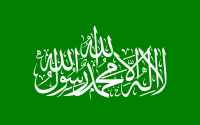188 Fatah supporters permitted to enter Israel
Saturday, August 2, 2008
On Saturday, 188 supporters of Fatah were allowed to enter Israel from the Gaza Strip, said one IDF spokesman. The Fatah supporters were fleeing after a bloody conflict in Gaza City. Defense minister Ehud Barak was the one who gave the permission for the Palestinians to enter Israel.

Palestinian National Authority President Mahmoud Abbas requested that they be allowed in on Saturday, according to the spokesman, as a result of Hamas' capture of a neighborhood in Gaza City.
The Palestinians entered Israel at the checkpoints near Nahal Oz and Erez, kibbutzes near the border of the northern section of the Gaza Strip. They were disarmed, prior to being allowed across the border. In addition, they will be asked about the circumstances which lead them to seek refuge in Israel, said the spokesman.
Late Saturday evening, Hamas militants took control of a eastern Gaza City neighborhood, al-Shojaeya. The Hamas police surrounded a house belonging to the pro-Fatah Helis clan, a family believed to be harboring the terrorists responsible for the July 25 bombing which claimed the lives of a six year old girl and 5 others. The battle left 4 dead, two of them Hamas militants, and close to 80 wounded.
The spokesman said that "they [the Palestinians] were asking to enter the state of Israel after being threatened by Hamas gunmen." The majority of the Palestinians entering Israel were from the Helis clan that had been involved in the gun battle.
22 of the of 188 were wounded, with the majority of the injuries being minor. Ambulances from Magen David Adom took 3 of the more severely injured to Soroka Medical Center in Beersheba as well as Barzilai Hospital in Ashkelon. The rest were transported to Ramallah in the West Bank.
The act of allowing the Palestinians to cross into Israel could perhaps be a sign of Israel's support, according to CNN. The IDF spokesman stated that "it was a sort of humane gesture."
Related news
- "Six year old girl and five others killed, Hamas arrests 200 Palestinians" — Wikinews, July 26, 2008
Sources
- Amos Harel. "Israel lets in 188 Fatah loyalists" — Haaretz, August 3, 2008
- Talal Abu-Rahmi. "150 Fatah supporters enter Israel after Hamas takes over east Gaza" — CNN, August 2, 2008
- "Israel Allows 150 Fatah Terrorists to Enter from Gaza" — Arutz Sheva, August 2, 2008
- "Israel lets fleeing Fatah men in after deadly Gaza clashes" — Agence France-Presse, August 2, 2008

